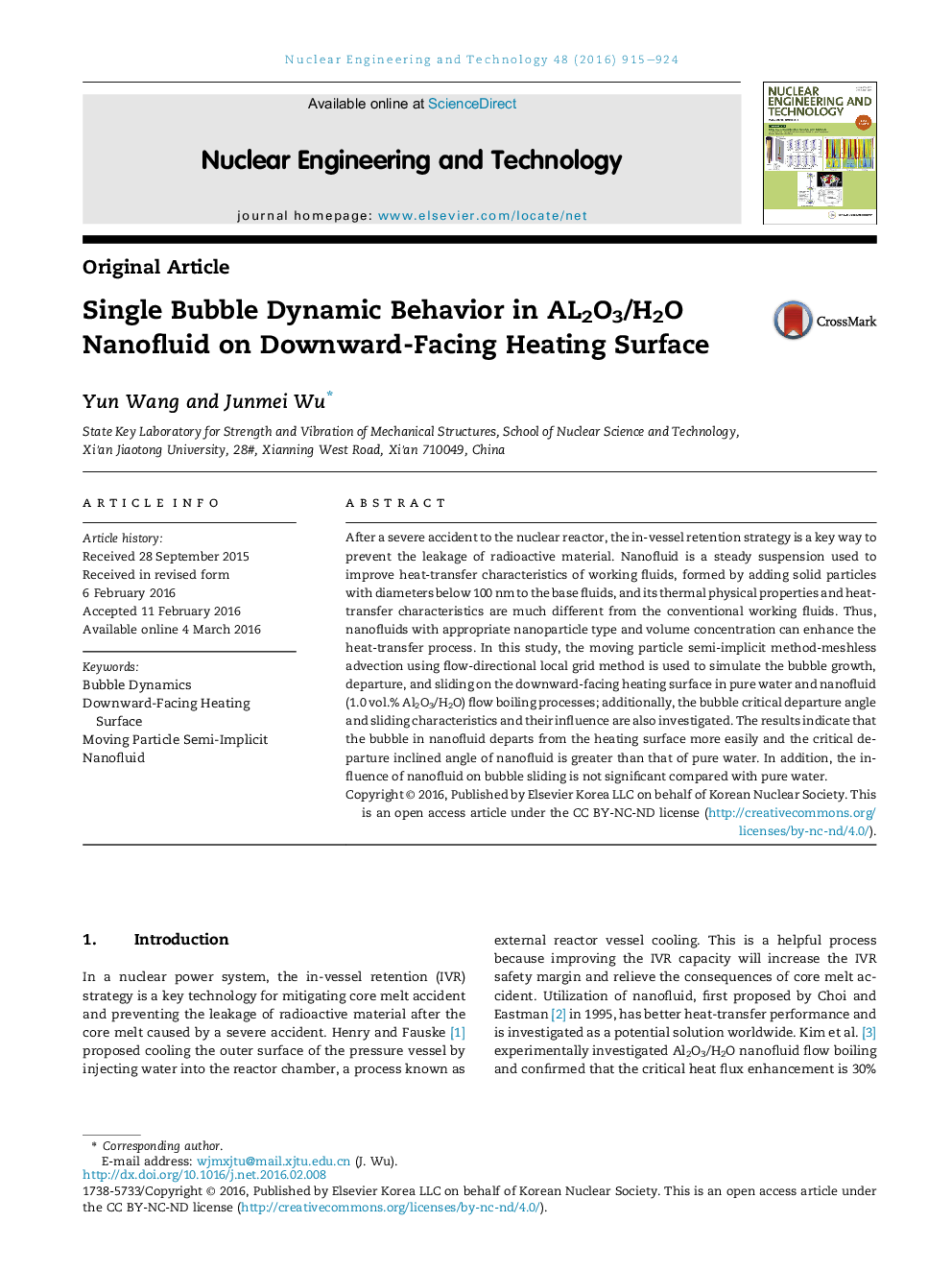| Article ID | Journal | Published Year | Pages | File Type |
|---|---|---|---|---|
| 1739832 | Nuclear Engineering and Technology | 2016 | 10 Pages |
After a severe accident to the nuclear reactor, the in-vessel retention strategy is a key way to prevent the leakage of radioactive material. Nanofluid is a steady suspension used to improve heat-transfer characteristics of working fluids, formed by adding solid particles with diameters below 100 nm to the base fluids, and its thermal physical properties and heat-transfer characteristics are much different from the conventional working fluids. Thus, nanofluids with appropriate nanoparticle type and volume concentration can enhance the heat-transfer process. In this study, the moving particle semi-implicit method-meshless advection using flow-directional local grid method is used to simulate the bubble growth, departure, and sliding on the downward-facing heating surface in pure water and nanofluid (1.0 vol.% Al2O3/H2O) flow boiling processes; additionally, the bubble critical departure angle and sliding characteristics and their influence are also investigated. The results indicate that the bubble in nanofluid departs from the heating surface more easily and the critical departure inclined angle of nanofluid is greater than that of pure water. In addition, the influence of nanofluid on bubble sliding is not significant compared with pure water.
